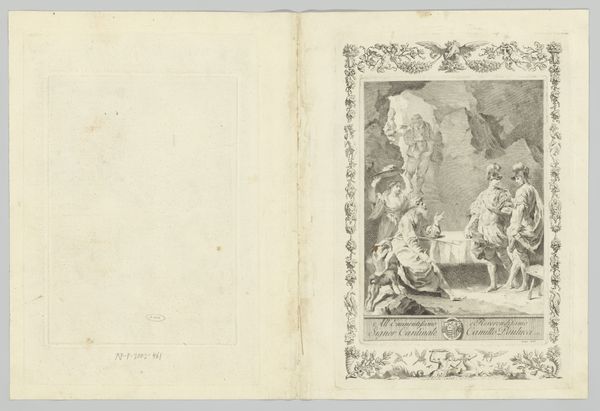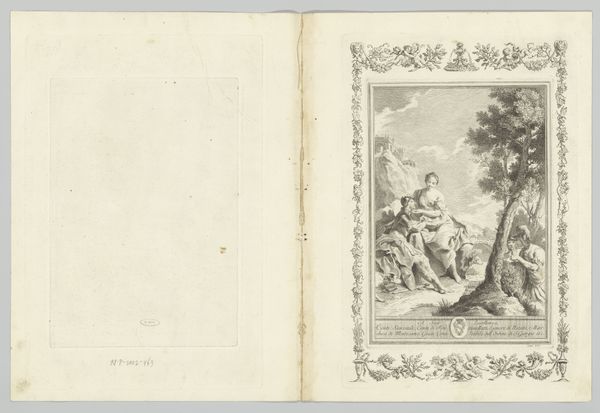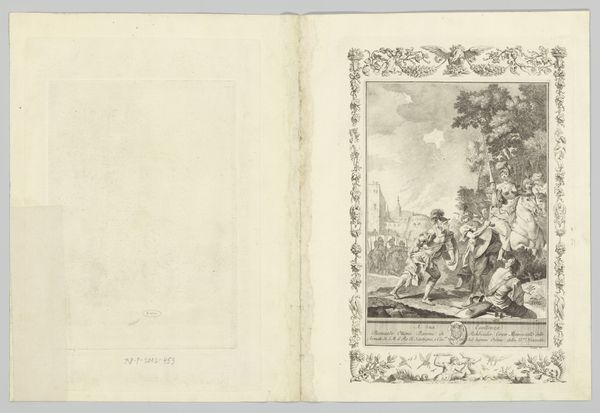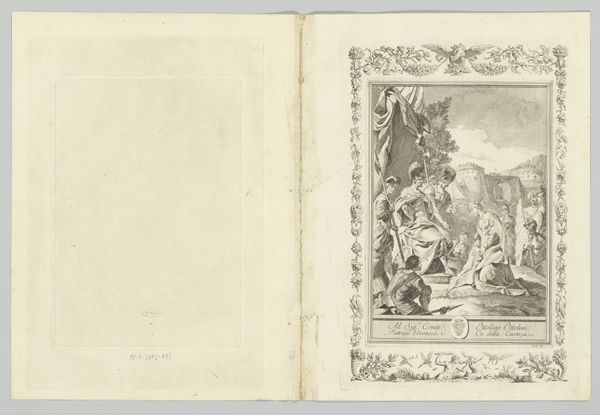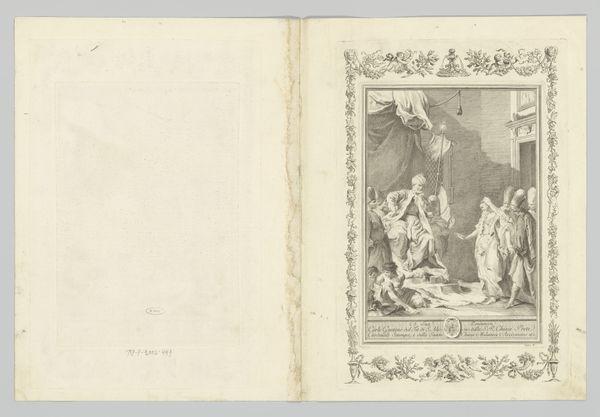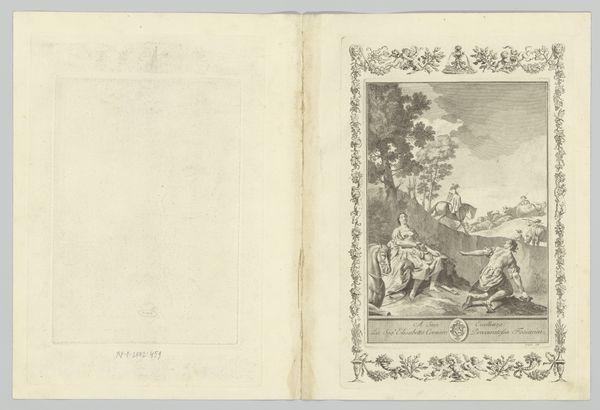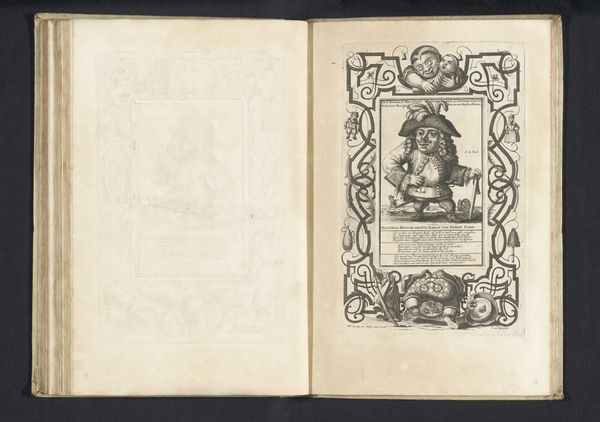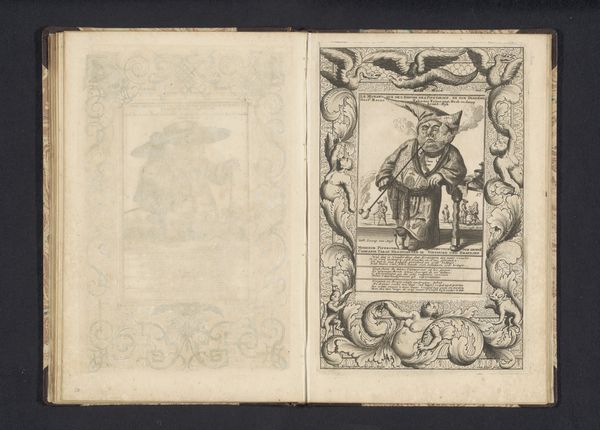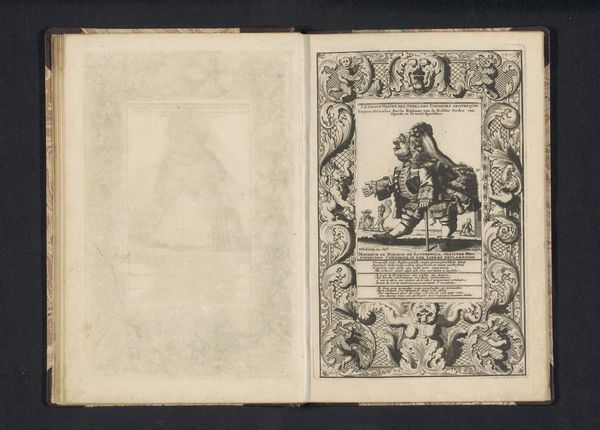
print, paper, ink, engraving
#
narrative-art
#
baroque
# print
#
paper
#
ink
#
history-painting
#
engraving
Dimensions: height 290 mm, width 200 mm, height 381 mm, width 254 mm
Copyright: Rijks Museum: Open Domain
Curator: Martin Schedel created this print in 1745, titled "Scène uit La Gerusalemme Liberata", using ink and engraving on paper. What are your immediate impressions? Editor: There’s a pronounced theatricality to it; a stage-like quality in the arrangement of figures, like actors in a drama. The contrast between the earthly realm below and the celestial scene above feels particularly charged. Curator: It’s worth considering that this piece visually engages with "La Gerusalemme Liberata", an epic poem of the late Renaissance by Torquato Tasso. The poem's themes—crusades, love, and conflict—resonated profoundly within European aristocratic and intellectual circles. Schedel, therefore, is not merely illustrating a scene; he’s entering into a conversation with deeply entrenched cultural narratives, and we must ask what social function this reproductive medium might have played for those who saw it. Editor: The woman in the chariot certainly grabs my attention, that symbol seems pretty important. Is she representing an allegory, a personification, or some other key character? Curator: Yes, her appearance gestures to the concept of Fortune or Fame, perhaps aligning itself with broader cultural anxieties present throughout Tasso's epic. How does it reconcile the grand narrative of the poem, for example, with everyday understandings of power, class, or social inequality at the time the engraving was made? What does the ornamental frame surrounding the composition, or the inscription below depicting two men in profile suggest? Editor: The floral ornamentation certainly speaks to the values of Baroque aesthetics, framing and elaborating on meaning. And that central scene – that tent and those supplicating figures! The image as a whole seems concerned with justice, piety, maybe mercy… the armored man, seated – there is such an active array of symbolic tension being conveyed in their gestures. Curator: Precisely. We might see the scene through a critical lens, interrogating how its aesthetic choices either reinforced or questioned prevailing power structures, perhaps highlighting marginalized perspectives within this historical drama. What impact might these decisions have on how viewers internalized and reproduced its narratives? Editor: Reflecting on our exchange, it strikes me how an image seemingly fixed in history can become a launchpad for such relevant discussions. Thank you. Curator: Likewise; this work now seems incredibly dense, packed with cultural, emotional, and social resonance. It’s an entryway into worlds both historical and ongoing.
Comments
No comments
Be the first to comment and join the conversation on the ultimate creative platform.
